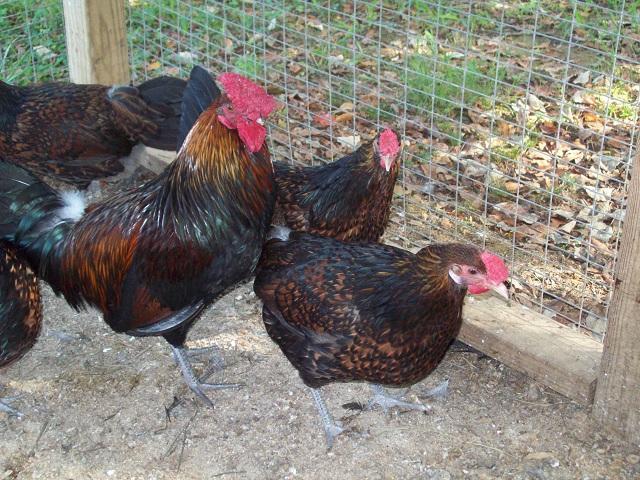The males breast seems to be developing rather well. It looks like the male has red earlobes while the females all have white earlobes. is that correct?
I respect that you have been so faithful to this thread It has been enjoyable to watch them develop. The males comb seems to be fairly large without falling over to one side.
I thought you might be interested in the following. It is extracted from The Mating and Breeding of Poultry by Lamon et al.:
"The Redcap"
This breed is one of good size, but not quite so large as the Silver Gray or Colored Dorking. In type, it is somewhat more of an upstanding fowl, the shanks being medium in length rather than very short. The body is deep, broad and long, especially in the female, and the breast is very round and full. In general, the birds are shorter in body and more rounded in contour than the rectangular Dorking. THe back in both sexes is straight and slopes downward slightly from shoulders to tail. The tail, which is well spread and of good size, is carried in a medium position, neither high nore low.
The comb is characteristic of the breed. In fact, it is the comb that gives the breed its name. It is rose, large in size, round, broad, setting squarely on the head, with no tendency to tilt or tip to one side, which may be so bad as to obstruct the sight. Like other rose combs, it should be free from hollows in the center or along the sides. it should be square in front, and the spoke should be well developed, of medium length, and extend straight back off the head, with no tendency to turn up or down. It is necessary to guard against narrow combs.
The ear lobe should be red. In this respect the breed is almost unique, for the eggs are white, and is very rare to find a breed with red lobes which lays a white egg. White ear lobes or white in ear lobes not infrequently occurs and must be guarded against.
The feathering is fairly profuse, showing especially in long, flowing hackle and saddle in the male bird, and in a good-sized and well-furninshed tail.
The legs and toes are a slate or leaden blue in color.
In mating, use a single or standard mating; that is, breeders of both sexes which are as near the standard as possible. In the male, be sure that the red sections of the hackle, back and saddlr are a good red in color and are not light, approaching a straw color. This is important, as light colored males tend to produce too light or washed-out colored females. The black striping of hackle, back and saddle should be a blue black or purple black, without any green sheen. The black and red wing color of the male should be distinct. The breast and fluff should be solid black. Red ticking or solid red feathers in the breast of males is a very bad fault. The general color of the red sections of the males should be rich and deep.
In the female, the ground color should be about the same as that of the Rhode Island Red, each feather terminating with a black marking shaped like a half moon. Shafting in all sections of the females is quite common and is a defect. Too light a ground color in both sexes, but paticularly in the females, is quite a serious difficulty, and breeders must be selected which are free from this defect if possible.
In making the mating, the following defects must be guarded against in so far as possible: tipped or lopped combs; narrow combs; not a well-developed spike to comb; red ticking or solid red feathers in breast of male; shafting in all sections of females; too light a ground color, especially in females; too small birds; white in ear lobes; too light or straw-colored hackle, back or saddle in males; dull black stripe in hackle, back, and saddle, showing a green sheen.






































